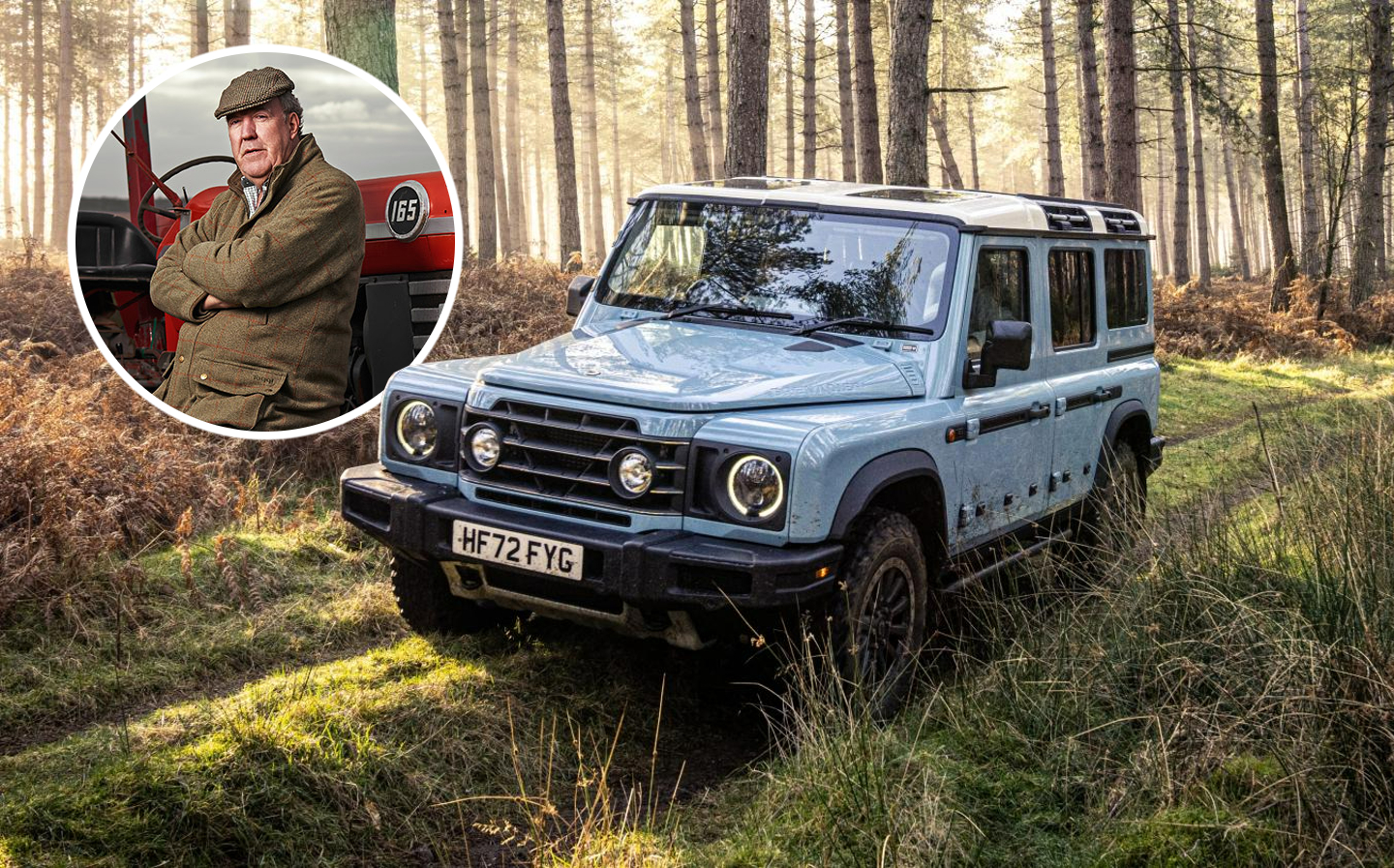Jeremy Clarkson says the Ineos Grenadier isn't a farmer's car
At least it features a place to hold the owners' cups of Bovril
Jeremy Clarkson ought to be a model customer for the Ineos Grenadier. Clarkson’s a farmer now, of course, meaning he values a rugged 4×4 for his daily duties around Diddly Squat. And he’s not big fan of modern tech and driver assists, so the retro looks and back-to-basics engineering of the Grenadier should appeal.
However, in a three-star review of the car in yesterday’s Sunday Times Magazine, Clarkson highlighted the Grenadier’s starting price of £55,000 as a core reason why Ineos boss Sir Jim Ratcliffe’s creation is not suitable for farmers like him. And that was just just the start of the critic’s issues with the model.
Clarkson notes that the idea of the Grenadier — and indeed the beer-loving billionaire Brexiteer Ratcliffe — taps into the psyche of those Land Rover enthusiasts who decried the arrival of the all-new Land Rover Defender, with its “flimsy hooks for shopping bags and underbody protection made from Fisher Price offcuts”. But that price tag means it’s more for landowners and the shooting fraternity than the farming set, he reckons.
And that’s a problem, according to Clarkson, because these types of buyers are used to sophisticated, high end luxury SUVs such as the Range Rover. By contrast, with its traditional box-section ladder-frame chassis, recirculating ball steering and heavy-duty solid beam axles, Clarkson calls the Grenadier “a hammer”.
“And I’m not talking about that puny little thing Andy Dufresne used to tunnel out of Shawshank. I’m talking about the sort of hammer they use to get rusted pins out of ships’ anchors.”
As a result, the car’s ride is fidgety, with steering that “has about 400 turns from lock to lock, and which stubbornly refuses to self-centre properly,” according to Clarkson.
“Every morning I’d turn right at the bottom of my farm drive, and unless I was prepared to do a very vigorous workout on the wheel, I’d keep on turning right until I was going back up the drive again.”
Additionally, the pedals are too close together to suit anyone who spends a lot of time wearing wellies, according to Clarkson: “It’s possible for your right foot to get stuck underneath the brake pedal. Which is not ideal if you want to, you know, stop.”
There were also questions about how robust the Grenadier — which is named after Ratcliffe’s favourite London pub — will be for anybody that wants to venture into the great outdoors, according to Clarkson. His time with the car — which to be fair to Ineos was identified as a pre-production version in a post-script under the review — wasn’t without incident, with a number of warning lights flashing up on the dashboard.
“The absolute last thing you need if you’re planning on driving to Timbuktu is a car that can’t even get round Oxfordshire without having an electronic hissy fit,” he wrote. Ineos told the paper that the glitches in Clarkson’s test car have been fixed on the production models.
One thing that will appeal is the rugged looks of the Grenadier. “Some say it looks a bit like a Mercedes G-Wagen, but it really doesn’t,” Clarkson confirms. “As you can see from the photographs, it looks so exactly like an old Defender you can see why Land Rover made all sorts of legal noises when they first saw the design sketches.”
Clarkson particularly liked the names of the various colours, including “Donny Grey”, which is a reference to the skies above Doncaster, where one of the bosses grew up.
The 282bhp BMW-sourced six-cylinder petrol engine proved a hit with Clarkson, too, as did the 21 roof-mounted switches on the inside of the roof. “You’re going to see that and if you have anything at all in your underpants you’re going to sign on the dotted line,” Clarkson wrote.
In the end, though, Clarkson reckoned that Ratcliffe, just like Elon Musk with Tesla, has come to find that putting a car together properly is hard.
“It seems that at some point the team thought, ‘We’ve spent enough time and money on this project now. And what we have will have to do.’ Sadly, though, it won’t.”
To read the full review at thetimes.co.uk, click here.
Related articles
- After reading Clarkson’s review of the Ineos Grenadier, you might like to read his review of the Land Rover Defender 130
- You may be interested to read how Jeremy Clarkson started out in motoring journalism
- Look back on 30 years of Jeremy Clarkson
Latest articles
- F1 2025 calendar and race reports: The new Formula One season as it happens
- Zeekr 7X AWD 2025 review: A fast, spacious and high tech premium SUV — but someone call the chassis chief
- Denza Z9GT 2025 review: Flawed but sleek 1,062bhp shooting brake from BYD’s luxury arm
- Extended test: 2024 Renault Scenic E-Tech review
- Best-selling cars 2025: The UK’s ten most popular models of the year so far
- Audi A6 Avant 2025 review: Trusty executive estate ticks expected boxes, and there’s still a diesel option
- Keir Starmer eases pressure on carmakers to sell EVs in response to ‘global economic headwinds’
- Ferrari 12Cilindri Spider review: Heady blend of traditional and futuristic becomes even more intoxicating after lid is removed
- Skoda reveals its fastest accelerating production car yet: the electric Elroq vRS














